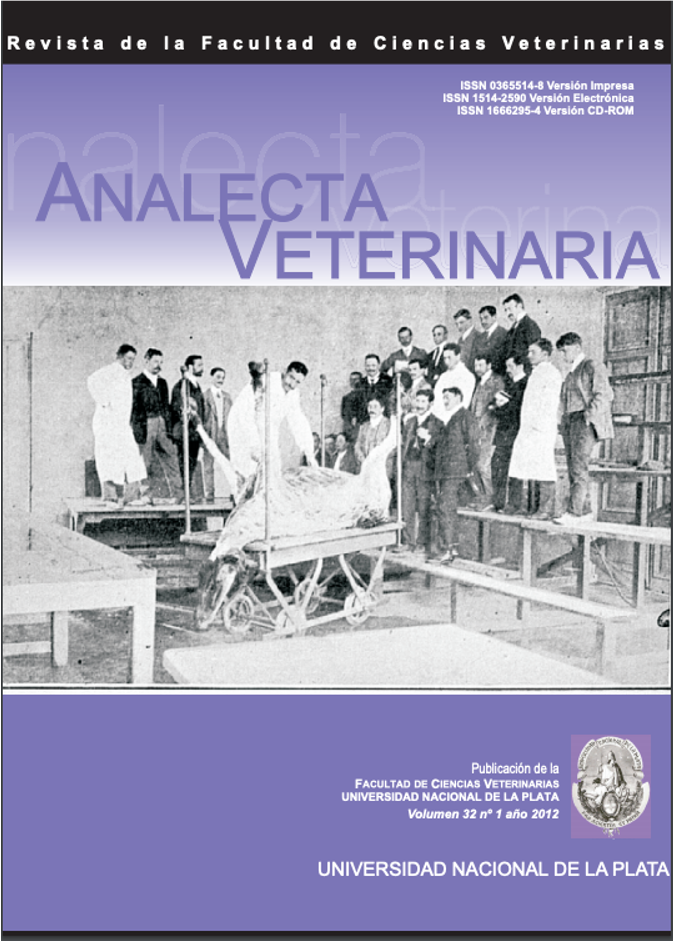Relación músculo-hueso en ratones adultos de una población segregante discriminados por su conformación corporal en tres edades
Keywords:
fémur, tibia, tríceps, sural, ratónAbstract
Hooper’s hypothesis postulates that the longitudinal growth of bone increases the mass of the skeletal muscles inserted which in turn affects the weight of the bone. In order to characterize these associations, the muscle-bone relationship in male and female mice belonging to a segregating population (F2) derived from crossing two lines selected for body conformation that differ in body weight but not in femur length was studied. Animals, within sex, were discriminated using the individual values of body weight and skeletal length recorded at weaning (21 days), at the age of selection (49 days), and the asymptotic values of both variables estimated using the Gompertz equation. Four groups resulting from all possible combinations between high and low biomass and high and low skeleton length were defined. The study of group effect on five indicators of muscle-bone relationship (femur and tibia weight, femur and tibia length and weight of triceps surae muscle) recorded at 150 days of age allowed to corroborate the hypothesis postulated by Hooper, particularly under low body weight conditions in which the biomass sustained does not represent a constraint against the selective pressure exerted to change the length of the bones.
Downloads
Metrics
References
Efstratiadis, A. Genetics of mouse growth. Int.J.Dev. Biol. 42: 955-976, 1998.
Hetzel, D.; Nicholas, F. Growth, efficiency and body composition of mice selected for post-weaning weight gain on ad libitum or restricted feeding. Genet. Res. 48: 101-109, 1986.
Falconer, D.S. Validity of the theory of genetic cor- relation: An experimental test with mice. Heredity 45: 42-44, 1954.
Cockrem, F. Selection for relationships opposite to those predicted by the genetic correlation between two traits in the house mouse (Mus musculus). Nature 183: 342-343, 1959.
Rutledge, J.J.; Eisen, E.J.; Legates, J.E. An experi- mental evaluation of genetic correlation. Genetics 75: 709-726, 1973.
Di Masso, RJ. Patrón de crecimiento de ratones de cinco genotipos seleccionados por conformación corporal según dos criterios. Tesis Doctoral. Facultad de Ciencias Veterinarias. Universidad Nacional de Rosario, 2003.
Hooper, A.C.B. Bone length and muscle weight in mice subjected to genetic selection for the relative length of the tibia and radius. Life Sci. 22: 283-286, 1978.
Hooper, A.C.B. Muscles and bones of large and small mice compared at equal body weights. J. Anat. 127: 117-123, 1978.
Di Masso, R.J.; Silva, P.S.; Font, M.T. Muscle- bone relationships in mice selected for different body conformations. J. Musculoskel. Neuron. Interact. 4 (1):41-47, 2004.
Di Masso, R.J.; Zerpa, C.M.; Silva, P.S.; Font, M.T. Femoral morphometry and femur length in mice selected for different body conformations. A potential animal model suitable for QTLs mapping. Archives of Animal Breeding 50(3) 309-319, 2007.
Di Masso, R.J.; Abdala, S.B.; Sánchez, S.M.; Font, M.T. Respuesta a la selección divergente por conformación corporal en el ratón. Mendeliana 9 (2): 79-92, 1991
Sheskin, D.J. Handbook of parametric and non- parametric statistical procedures. Chapman & Hall. USA. 2000.
Goodale, H.D. A study of the inheritance of body weight in the albino mouse by selection. J. Hered. 29: 101-112, 1938.
Downloads
Published
How to Cite
Issue
Section
License
Authors retain the copyright and assign to the journal the right of the first publication, with the with the terms of the Creative Commons attribution license. This type of license allows other people to download the work and share it, as long as credit is granted for the authorship, but does not allow them to be changed in any way or used them commercially.

Analecta Veterinaria by School of Veterinary Sciences, National University of La Plata is distributed under a Creative Commons Attribution-NonCommercial-NoDeriv 4.0 International License.

























